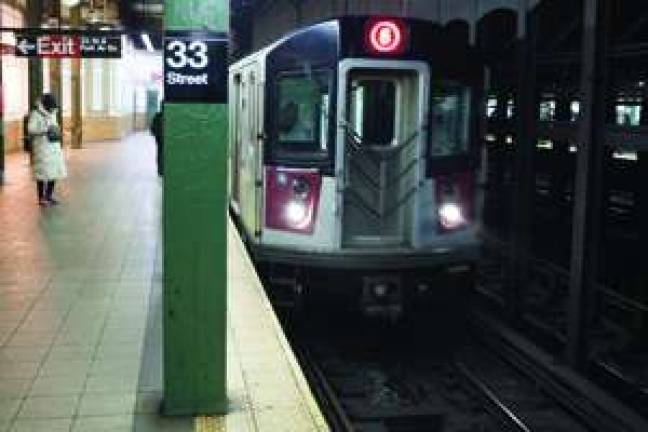Subway Tragedies Spark Outrage from Politicians

Manhattan Borough President Scott Stringer wants answers after a recent spike in deaths, injuries By Caroline Lewis A man jumped onto the subway tracks as an R train came hurtling toward the platform at the Fourth Avenue-Ninth Street Station in Park Slope on Sunday morning. The man was taken to the hospital and remained in critical condition after his apparent suicide attempt, and the NYPD reported him dead the next day. This was the sixth death on the tracks in January, and the news is beginning to feel eerily commonplace. The incident prompted Manhattan Borough President Scott Stringer to renew last week's call for the MTA to conduct an in-depth investigation into the cause of deaths in the subway and an analysis of the cost and effectiveness of measures that could be taken to prevent them. "Another attempted suicide cannot become a commonplace occurrence in one of the largest transit systems in the world," Stringer said. A PSA that the MTA placed in subway cars informs riders that an average of 140 people get struck by trains each year. In 2012, 55 of those incidents resulted in death, up from 47 in 2011. Stringer claims that the upswing in subway deaths in December and January puts the city on track to reach 100 fatalities in 2013. Suicide is the most common cause of death on the subway, but even within the last two months, the incidents have run the gamut from a man being pushed, to a woman falling, to a guy wandering around drunk on the tracks. "The bad spike in being struck by trains is something that's on the minds of hundreds of thousands of riders who would like to see something done about this tragic and frightening problem," said Gene Russianoff of the Straphangers Campaign. But given the varied nature of subway tragedies, including many that are intentional, how realistic is it to try to prevent them? More frequent audio warnings, barriers on the platform's edge, motion sensors on trains and better mental health services have all been mentioned as possible ways to prevent death and injury on the subway. But Stringer, Russianoff and other transit safety advocates want to avoid jumping to conclusions about how to solve the problem, especially if the solution has a hefty price tag. In December, the MTA publicly considered the idea of placing sliding doors between the platform edge and the train tracks to prevent deaths and injuries, starting with the L train as a pilot program. The agency estimated that installing sliding doors system-wide would cost over $1 billion. For now, transit safety advocates just want as much information as possible as to why people die on the subway and what safety measures have worked for public transit systems in other cities. "Deaths and injuries in the subway worry everyone, and there's very little information available about the best way to prevent them," said John Raskin of the Riders Alliance. Stringer specifically called on MTA Inspector General Barry Kluger to conduct the investigation. He responded to Stringer's letter by saying that a state agency-not the MTA-will lead the investigation. "As the MTA inspector general, I am coordinating our efforts regarding subway fatalities with the New York State Public Transportation Safety Board, which has primary responsibility for the investigation of accidents and fatalities on the facilities of the MTA, and of which I am a member," Kluger said in an official statement.